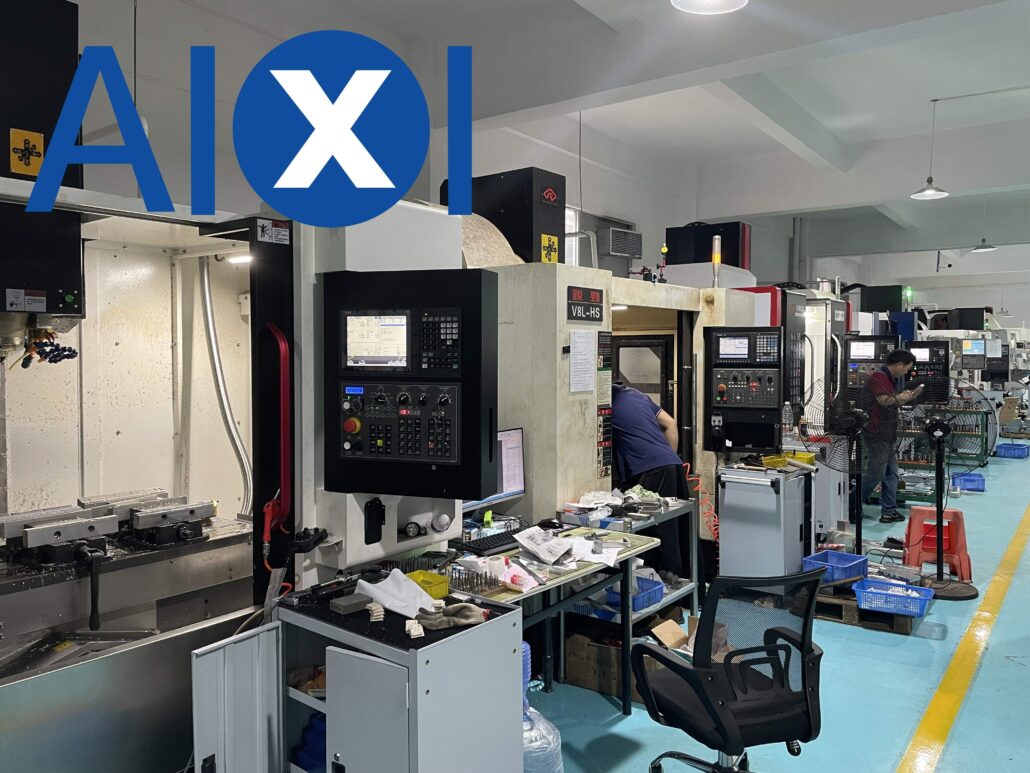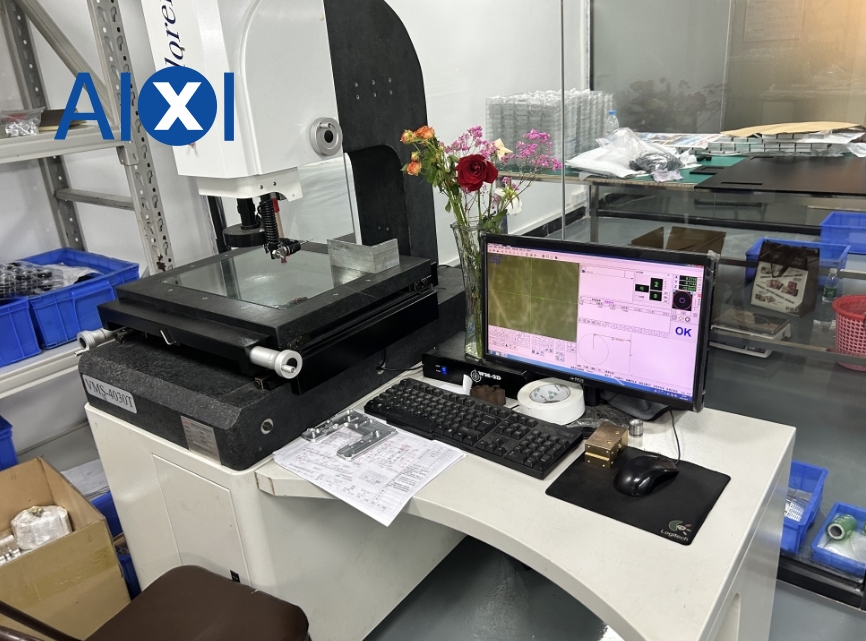CNC machining, also known as Computer Numerical Control machining, is a subtractive manufacturing process that involves the use of computer-controlled machines to remove material from a workpiece to create a desired shape or part. This technology has revolutionized the manufacturing industry, allowing for precise and efficient machining of complex parts with high accuracy and repeatability.
1.The Basics of CNC Machining
CNC machining works by converting a computer-aided design (CAD) file into a set of instructions that control the movement of machine tools. These tools are typically mounted on a machine known as a CNC machine or CNC lathe, depending on the type of machining being performed. The CNC machine reads the instructions from the CAD file and moves the tools accordingly, removing material from the workpiece to create the desired shape.
The CAD file is typically created using specialized software such as AutoCAD or SolidWorks. This software allows designers to create 3D models of the part they want to machine. Once the model is complete, it can be exported as a CAD file that can be read by the CNC machine.
2.How CNC Machining Works
The CNC machining process begins with the selection of a suitable workpiece material. This material can range from metals like steel and aluminum to plastics and composites, depending on the application and requirements of the part. The workpiece is then loaded into the CNC machine, which is equipped with various tools such as cutting tools, drills, and milling cutters.
The CNC machine reads the instructions from the CAD file and converts them into specific movements of the tools. This is achieved through a numerical control system that controls the position, speed, and feed rate of the tools. The machine’s control system compares the desired shape from the CAD file with the actual shape of the workpiece and adjusts the tool paths accordingly to ensure precision.
As the machining process progresses, the tools remove material from the workpiece, gradually shaping it into the desired form. This material removal can be achieved through different techniques such as cutting, drilling, milling, and turning, depending on the type of CNC machine and the specific requirements of the part.
CNC machining is a common mechanical processing method, which includes the following main steps:
1、 Programming
Programming is the first and most crucial step in CNC machining. Programmers need to input machining information into the CNC system based on drawings and technical requirements. Programming languages are generally G code or M code, which are interpreted and converted into machine instructions by CNC systems to control the movement and operation of machine tools. During the programming process, programmers need to consider factors such as materials, tools, cutting parameters, cooling methods, etc. to ensure the accuracy and efficiency of machining.
2、 Proofreading
Proofreading is an important part of the CNC machining process. After inputting the program into the CNC system, the operator needs to proofread the program to ensure its correctness and safety. During the proofreading process, the operator needs to verify key information such as coordinate values, tool compensation values, cutting parameters, etc. in the program, and check the logic and integrity of the program. If errors or unreasonable aspects are found, timely adjustments and modifications need to be made.
3、 Prepare cutting tools and materials
Before CNC machining, the operator needs to prepare the required tools and materials. The type and quantity of cutting tools need to be determined based on the processing requirements and the specifications of the machine tool. At the same time, operators also need to check the accuracy and sharpness of the cutting tools to ensure the accuracy and efficiency of processing. Materials also need to be selected and prepared according to the processing requirements, including material specifications, models, dimensions, etc.
4、 Clamping and positioning
Before CNC machining, the operator needs to clamp and position the material. Clamping refers to fixing materials onto a machine tool for cutting purposes. Positioning is to determine the machining position and direction of the material to ensure the accuracy and precision of the machining. Clamping and positioning need to consider processing requirements, machine specifications, as well as factors such as material properties and shape.
5、 Cutting processing
Cutting is the core link of CNC machining. Under the control of the program, the movement and operation of the machine tool are precisely controlled, and the cutting tool performs cutting processing according to the path specified by the program. During the cutting process, the operator needs to observe the cutting situation and adjust the cutting parameters in a timely manner to ensure the accuracy and efficiency of the machining. At the same time, operators also need to pay attention to the operation of the machine tool and the use of cutting tools, and replace or adjust the machine tool in a timely manner.
6、 Inspection
Inspection is the final step in the CNC machining process. After the processing is completed, the operator needs to inspect the processed product to ensure that it meets the drawings and technical requirements. The inspection content includes dimensional accuracy, surface quality, shape accuracy, etc. If any unqualified products or problems are found, they need to be adjusted and repaired in a timely manner.
In summary, the process of CNC machining includes multiple stages such as programming, proofreading, preparing tools and materials, clamping and positioning, cutting, and inspection. These links are interconnected and coordinated, ultimately achieving efficient and high-precision mechanical processing.
3.Types of CNC Machines
There are several types of CNC machines used for different machining processes:
CNC Lathes: These machines are used for rotational machining, such as turning and boring. They are suitable for machining cylindrical parts and components with axial symmetry.
CNC Milling Machines: These machines are used for removing material from a solid block to create complex shapes and features. They are commonly used for machining flat surfaces, slots, and pockets.
CNC Drilling Machines: These machines are specifically designed for drilling holes in workpieces. They can be used for both small and large-scale drilling operations.
CNC Grinding Machines: These machines use abrasive wheels to remove material from the workpiece, achieving a high surface finish and precision. They are commonly used for finishing and refining machined surfaces.
4.Advantages of CNC Machining
CNC machining offers several advantages over traditional machining methods:
Precision and Accuracy: CNC machining allows for precise control of tool paths and movements, ensuring high accuracy and repeatability. This is especially beneficial for machining complex parts with tight tolerances.
Efficiency and Speed: CNC machines can operate continuously without the need for manual intervention, significantly increasing production speed and efficiency.
Flexibility: CNC machining is highly flexible, allowing for easy modifications to the CAD file and rapid prototyping. This enables quick iterations and modifications during the design and manufacturing process.
Cost-Effectiveness: While the initial setup costs for CNC machining can be higher, the long-term benefits of increased efficiency, precision, and repeatability often lead to cost savings.
4.Applications of CNC Machining
CNC machining is widely used in various industries for manufacturing complex parts and components. Some of the common applications include:
Automotive Industry: CNC machining is used for manufacturing engine parts, gearboxes, and other mechanical components in the automotive industry.
Aerospace Industry: Precision and lightweight components are crucial in the aerospace industry, and CNC machining is often used to produce parts such as turbine blades and aircraft frames.
Medical Industry: CNC machining is used for manufacturing surgical tools, implants, and medical devices that require high precision and accuracy.
Electronics Industry: CNC machining is essential for manufacturing components such as circuit boards, housings, and connectors in the electronics industry.
6.Conclusion
CNC machining is a crucial technology in modern manufacturing, offering precision, accuracy, efficiency, and flexibility. It has transformed the manufacturing industry by enabling the production of complex parts with high precision and repeatability. With the continuous advancement of CNC technology and the increasing demand for precision-machined parts across various industries, the role of CNC machining is expected to grow even further in the future.

 Deutsch
Deutsch Français
Français 日本語
日本語 Español
Español

